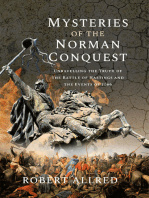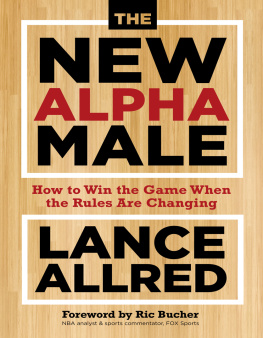MICHAEL ALLRED: CONVERSATIONS
Conversations with Comic Artists
M. Thomas Inge, General Editor
Michael Allred: Conversations
Edited by Christopher Irving

www.upress.state.ms.us
The University Press of Mississippi is a member
of the Association of American University Presses.
Copyright 2015 by University Press of Mississippi
All rights reserved
Manufactured in the United States of America
First printing 2015

Library of Congress Cataloging-in-Publication Data
Allred, Mike (Mike Dalton)
[Interviews. Selections]
Michael Allred : conversations / Edited by Christopher Irving.
pages cm. (Conversations with comic artists)
Includes index.
ISBN 978-1-4968-0326-9 (cloth : alk. paper) ISBN 978-1-4968-0327-6 (ebook) 1. Allred, Mike (Mike Dalton)Interviews. 2. CartoonistsUnited StatesInterviews. I. Irving, Christopher, editor. II. Title.
PN6727.A4175Z46 2015
741.5973dc23
2015005896
British Library Cataloging-in-Publication Data available
Works by Michael Dalton Allred
Dead Air (1989)
Graphique Musique 3 issues (19891990); collected edition of Citizen Nocturne 1990
Creatures of the Id (1990)
Grafik Muzik 4 issues (19901991)
Madman 3 issues (1992); collected edition Madman: The Oddity Odyssey 1994, as part of Madman Two Trilogies: The Tundra Age (1995), Madman, Vol. 1: The Oddity Odyssey 2002 and part of Madman Vol. 1 2007 and part of Madman Gargantua (2007)
Madman Adventures 3 issues (19921993); collected edition as part of Madman Two Trilogies: The Tundra Age (1995), Madman, Vol. 2: Madman Adventures 2002, part of Madman Vol. 1 2007 and part of Madman Gargantua (2007)
Madman Comics 20 issues (19942000); collected edition Madman Comics: Yearbook 95 (#15) 1996, Madman Limited Edition Box Set (#110) 1997, The Complete Madman Comics Vol. 2 (#610) 1997, The Complete Madman Comics Vol. 3 (#1115) 2000, The Complete Madman Comics Vol. 4 (#1620) 2001, Madman Vol. 2 (#111) 2007, Madman Vol. 3 (#1220) 2008 and part of Madman Gargantua (2007)
The Superman/Madman Hullabaloo 3 issues (1997); collected edition 1998
Red Rocket 7 7 issues (19971998); collected editions 1998 and 2008
The Gear: Son of Red Rocket 7 (1998); music album
Mike Allreds G-Men from Hell (2000); motion picture directed by Christopher Coppola
The Atomics 15 issues (20002001); collected edition The Atomics Super Deluxe Limited Edition 2001, Madman and the Atomics Vol. 1 (2007) and part of Madman Atomica (2011)
Madman Picture Exhibition 4 issues (2006)
Madman 20th Anniversary Monster (2012)
Solo #7 (2005); collected as part of Solo Deluxe Edition (2013)
Madman King-Size Super Groovy Special (2006); collected in Madman Vol. 3 (2008)
Madman Atomic Comics 17 issues (20072009); collected editions Madman Atomic Comics Vol. 1 (2008), Madman Atomic Comics Vol. 2 (2009), Madman Atomic Comics Vol. 3 (2010) and part of Madman Atomica (2011)
The Gear: Left of the Center of the Universe 2009; digital music album
Madman 20th Anniversary Monster (2012)
Batman Black and White vol. 2 #4 (2014)
Madman in Your Face 3D Special! (2014)
CONTENTS
Christopher Irving / 1997
Stefan Blitz and Brian Saner Lamken / 2000
Mike Jozic / 2001
Christopher Irving / 2001
Jon B. Cooke / 2003
Christopher Irving / 2009
Christopher Irving / 2010
David Weigel / 2011
Gavin Lees / 2012
Alex Fitch / 2012
Jamie S. Rich / 2013
Joshua Yehl / 2014
Christopher Irving / 2014
INTRODUCTION
Michael Allred exists in a unique position amongst his contemporaries, and is known just as much for his creator-owned work like Madman as his mainstream comic book collaborations on X-Force, iZombie, and Silver Surfer.
Michael Dalton Allred is a product of the pop culture of the 1960s that includes the Adam West Batman show and the Stan Lee and Jack Kirby Marvel comics. He abandoned comics as a teenager and returned to them as a young adult in the 1980s, discovering auteur-driven work such as Love and Rockets by the Hernandez Brothers along with pivotal superhero comics such as Frank Millers Dark Knight Returns. Possibly because of this lapse in exposure to comic books, Allreds work combines the veneer of 1960s popular culture with the sophistication of the contemporary graphic novel; while this could make (and arguably at times, has made) him an anomaly, it furthers his position as a unique cartoonist with his own voice and style. Some could consider Allred a postmodernist: while his artwork evokes the innocence of the past, the spiritualistic and existentialist themes that run rampant through his work can prove more jarring (and narratively effective) in comparison.
His signature character in Madmans own dealing of existentialism, mortality, spiritualism, and the question of life after death all takes place in Allreds world of high octane adventures and bright Technicolor candy hues (the coloring is courtesy of his lifelong creative partner: his wife, Laura, who has achieved her own degree of acclaim in the industry). Where other superheroes of this grim and gritty time period would brood while standing in the rain and gritting their teeth, Madman genuinely asks the bigger questions while embarking on his adventures. The blending of popular culture influences, classic comic books, and philosophy arguably places Allreds Madman comics on par with Love and Rockets.
Allred was raised and immersed in popular culture as a child, and his rediscovery of the comic book medium in the 1980s brought him to create his own pop culture through Madman and Red Rocket 7; coming around to work on iconic Stan Lee and Jack Kirby creations at Marvel, as well as on the covers for the DC Entertainment Batman 66 comic book starring Allreds child hero Adam West, has brought him full circle to contribute to the pop culture that inspired him in the first place.
In compiling the interviews for this book, I realized that not only have I interviewed Allred more than any other comic book creator in my eighteen years as historian and journalist, but also that you can see the evolution of Allred from indie creator to established comics professional. His creative enthusiasm from the late 90s remains there, yet Allred himself is in a creative position where he can utilize several different creative voices (or aspects of a singular one) through a combination of creator-owned and corporate comic book work. While still pursuing further Madman comic books on an almost annual basis, Allred has flourished as a collaborative artist in mainstream comic book collaborations; yet there have not been accusations of the artist selling out or losing sight of his authorial voice.
He has also openly come to terms with the fact that Frank Einstein/Madman is his cipher and that the work is semiautobiographicalthe confirmation cements Allreds own struggles with spirituality and religion. He has also opened up, in both the interview with his former editor Jamie S. Rich and the most recent one with myself, about the bouts of existential anxiety he has struggled with since childhood. Much of that centers around a fear of death and recognition of mortalitywhich has become a theme through
Next page








